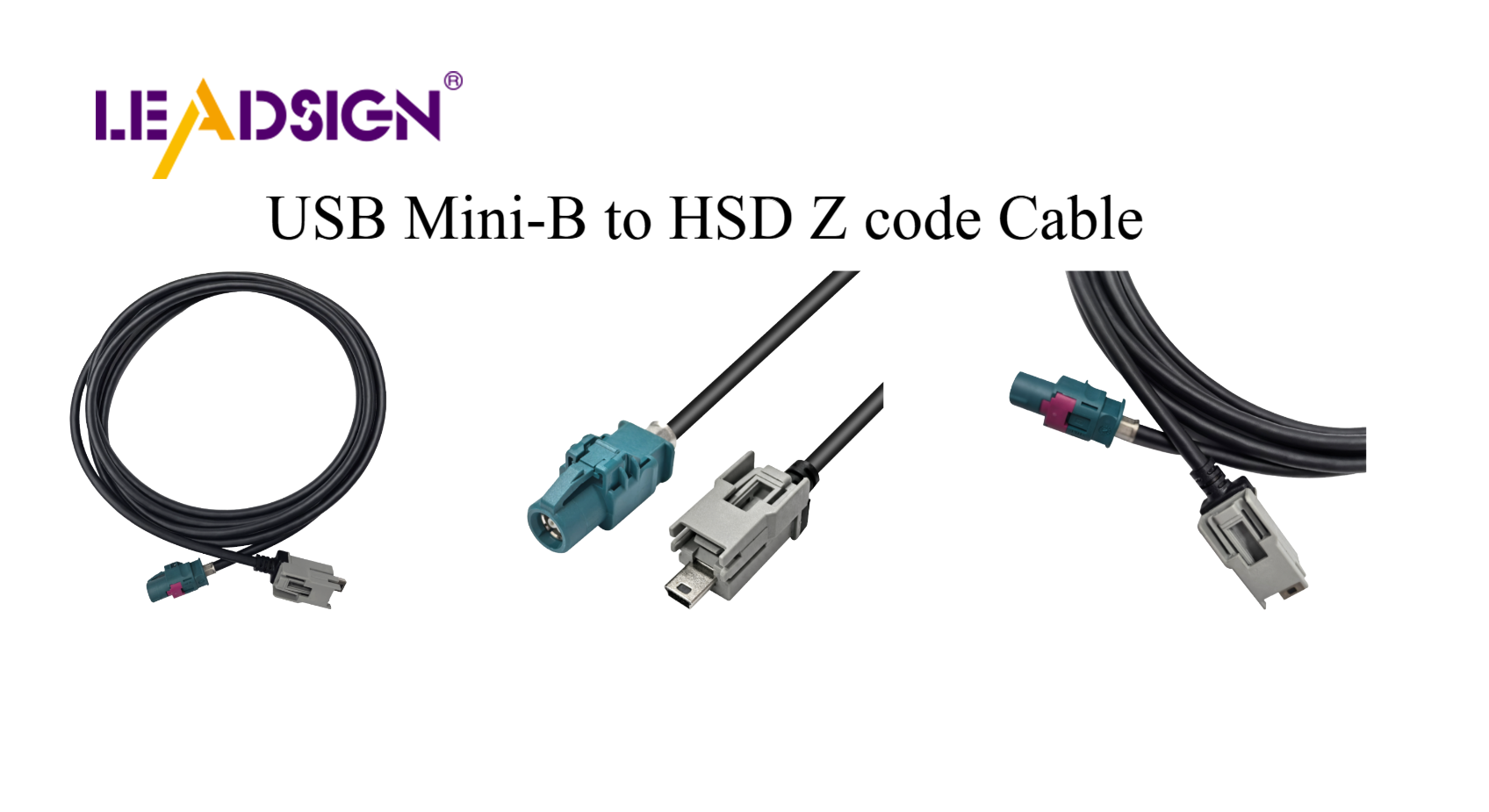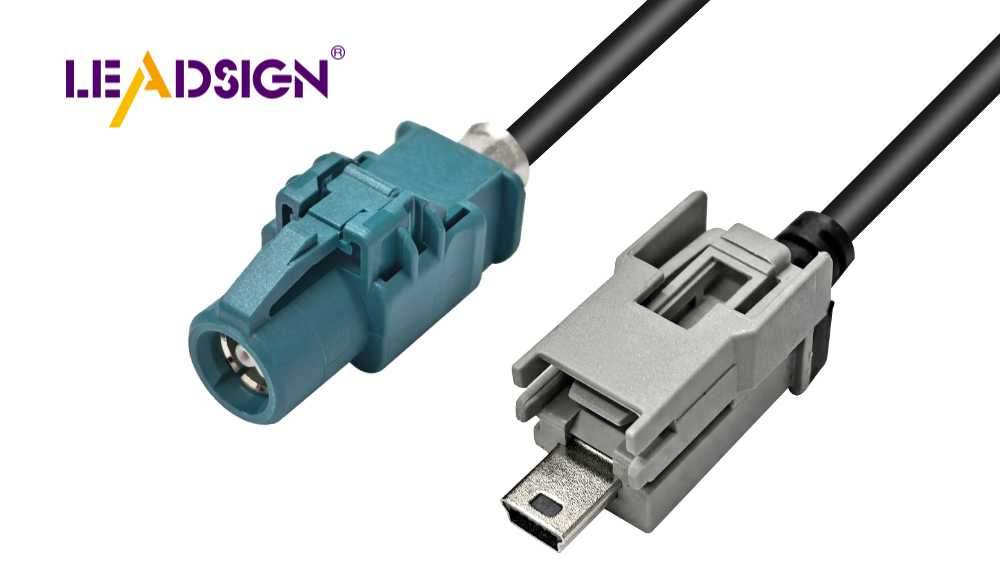Step-by-Step Guide to Installing Vehicle Connectors

Vehicle connectors are important for keeping cars safe and working. They help systems like airbags and brakes communicate properly. This keeps you safe while driving. Installing them correctly makes sure they work well and last long. A simple guide makes installation easier and prevents mistakes. Whether it's for charging electric cars or other uses, following steps carefully ensures everything works right and gives you confidence.
Key Takeaways
Preparation is key: Gather all necessary tools and materials before starting to save time and avoid mistakes.
Safety first: Always disconnect the car battery and wear protective gear to prevent accidents during installation.
Choose the right location: Select an easily accessible spot for connectors to facilitate future repairs and protect them from environmental damage.
Follow a clear installation process: Securely mount the connector, connect the correct wires, and use insulation to prevent short circuits.
Regular testing is essential: Use a multimeter to check voltage and ensure connectors function properly with their devices.
Stay proactive: Regularly inspect connectors for loose wires or damage to maintain their reliability and longevity.
Use quality materials: Opt for high-quality connectors and wiring to enhance durability and performance in your vehicle.
Getting Ready to Install Vehicle Connectors
Good preparation makes installation easy and smooth. Gather tools, materials, and follow safety steps to avoid mistakes and finish successfully.
Tools and Supplies You’ll Need
Before starting, collect all tools and supplies. Being prepared saves time and avoids delays.
Important Tools
You’ll need some basic tools for the job. These include:
Screwdrivers to tighten or loosen screws.
Wire strippers to safely remove wire coverings.
A drill to make holes for mounting.
A multimeter to check electrical connections and voltage.
Each tool helps ensure the connectors are secure and work properly.
Needed Materials
Use materials that fit your vehicle’s needs. Common materials include:
Connectors: Pick ones made for your purpose, like weatherproof ones for outdoor use or high-current ones for power.
Wiring harness: Links the car’s electrical system to the connector.
Mounting brackets: Hold the connector in place to stop movement.
Heat shrink tubing: Protects wires from water, dirt, and shaking.
Using good-quality materials makes the connectors last longer. For example, Posi-Products connectors are water-, dirt-, and heat-proof, making them great for long use.
Staying Safe
Safety is very important when working with car electronics. Follow these steps to stay safe and protect your car.
Unplugging the Car Battery
Always unplug the car battery first. This stops short circuits and keeps you safe from shocks. Find the battery, remove the negative terminal, then the positive one.
Wearing Safety Gear
Wear gloves to protect your hands and glasses to shield your eyes. These simple steps can stop injuries while working.
Keeping the Workspace Clean and Dry
Work in a clean, dry area. A tidy space helps you avoid losing small parts. A dry area prevents electrical problems. Keep tools and materials organized for easier work.
By preparing well and following safety rules, you’ll have a successful installation. This ensures the connectors work well and last a long time.
Picking the Best Spot for Vehicle Connectors
Choosing the right spot for connectors helps them work well. A good location makes maintenance easier and keeps them safe from harm.
Things to Think About
When picking a place for connectors, consider some important points. These help ensure a strong and lasting setup.
Easy to Reach for Repairs
Put connectors where you can reach them easily. This helps with wiring, repairs, or upgrades later. Hard-to-reach spots make fixing or replacing them harder. Easy access saves time and avoids stress.
Protection from Weather and Dirt
Moisture, dirt, and heat can harm connectors. Pick a spot that keeps them safe from these things. For outdoor connectors, weatherproof ones are better. Protecting them from damage makes them last longer and work better.
Popular Placement Choices
Different connectors need different spots based on their use and the car's design. Here are some common places to put them.
Back Bumper for Towing
The back bumper is great for towing connectors. It’s easy to connect trailers here. This spot also keeps wires short and neat. Make sure they’re fixed tightly so they don’t move.
Engine Area for Electrical Use
The engine area is good for electrical connectors. It protects them from weather and fits well with the car’s wiring. Keep wires tidy to avoid problems with moving parts or sharp edges.
By thinking about these points and picking the right spot, your connectors will last longer. Good placement makes them safer and easier to maintain.
Step-by-Step Installation Guide for Vehicle Connectors

Installing vehicle connectors needs care and focus. Following clear steps helps them work well and last longer. This guide will help you finish the job easily.
Mounting the Connector
The first step is mounting the connector. A strong mount stops it from moving and keeps it secure.
Marking and Drilling Holes for the Mounting Bracket
Find the exact spot for the connector. Use a marker to mark where to drill holes. Make sure the spot fits the car’s design and is easy to reach later. After marking, drill the holes carefully. Hold the drill steady to avoid damage.
Tip: Check your marks twice before drilling to avoid mistakes.
Securing the Connector to the Bracket
Once drilled, attach the bracket to the car with screws or bolts. Tighten them well so the bracket stays firm. Then, place the connector on the bracket and secure it with the hardware. Make sure it is stable and doesn’t shake.
Wiring the Connector
Wiring is very important for the connector to work right.
Identifying the Correct Wires in the Vehicle
Find the car’s wiring harness. Look for wires that match the connector’s terminals. Use the car manual or a wiring chart to be sure. Picking the wrong wires can cause problems or be unsafe.
Connecting Wires to the Appropriate Terminals
Match each wire to the correct terminal on the connector. Push the wires in firmly and use crimping tools to secure them. Tight connections stop wires from coming loose later.
Using Heat Shrink Tubing or Electrical Tape for Insulation
Cover bare wires with heat shrink tubing or electrical tape. Heat shrink tubing works better to block water and dirt. Use a heat gun to shrink the tubing tightly around the wires.
Note: Covering wires well stops short circuits and makes the setup last longer.
Securing and Organizing Wires
The last step is organizing the wires. This keeps them safe and prevents damage.
Using Zip Ties or Clamps to Secure Wires
Group the wires neatly and tie them with zip ties or clamps. Attach the bundles to fixed spots in the car to stop movement. This keeps wires tidy and safe from wear.
Ensuring Wires Are Not Exposed to Sharp Edges or Moving Parts
Check the wire path closely. Make sure wires don’t touch sharp edges or moving parts like fans. Use sleeves or extra covers if needed to protect the wires.
Reminder: Check the wires often after installation to keep them secure.
By following these steps, you can install vehicle connectors successfully. A good installation makes your car safer and more reliable.
Testing and Checking Vehicle Connectors
Testing ensures vehicle connectors work safely and correctly. It confirms your setup is good and finds problems early.
Checking the Connection
Checking the connection makes sure the connectors work properly. Follow these steps to check everything:
Using a Multimeter to Measure Voltage
A multimeter helps test electrical connections. Set it to measure voltage. Place its probes on the right connector terminals. The reading should match your vehicle's voltage needs. If it’s too low or missing, check the wiring again.
Tip: Use your car manual to find the correct voltage.
Testing with the Device It Powers
After checking voltage, test the connector with its device. For example:
Plug in trailer lights to see if they light up.
Connect a USB device to check charging or data transfer.
Test cameras or other systems to ensure they work.
This step confirms the connector does its job well.
Fixing Common Problems
If the connector fails, troubleshooting can solve the issue. Here are common problems and fixes:
Loose Wires or Connections
Loose wires can stop the connector from working. Check all wires and terminals. Tighten loose screws or crimps. Make sure wires are firmly attached.
Reminder: Tight connections prevent future problems.
Wrong Wiring Setup
Wrong wiring can cause failure or damage. Check your car’s wiring chart and match wires correctly. If there’s a mistake, fix it by reconnecting wires properly.
Connector Not Matching Vehicle Wiring
Some connectors don’t fit all cars. If it doesn’t work, check if it matches your car’s system. You might need adapters or extra parts for it to work.
Note: Use connectors made for your car to avoid issues.
By testing and fixing problems, your vehicle connectors will work well. Regular checks also help them last longer and stay reliable.
Putting in vehicle connectors is easy with clear steps. First, get your tools ready and pick a good spot. Mount the connectors securely and connect the wires carefully. Test them to make sure they work properly. Check them often to keep them safe and reliable. Look for loose wires or damage to avoid problems later. Always double-check your work and stay safe while doing it. Taking care of the connectors helps them last longer. It also makes your car work better overall.
FAQ
What do connectors do in car wiring?
Connectors are key to your car's electrical system. They help devices work together, making everything run smoothly. Using connectors makes fixing and maintaining your car easier. Good connectors also prevent electrical problems, keeping your car safe.
How do smart connectors make cars safer?
Smart connectors improve safety by checking your car constantly. They find issues like overheating or rust and warn the system. This helps stop accidents and keeps your car working well.
Why are pigtail connectors important for cars?
Pigtail connectors keep your car's electrical parts connected. They send power and signals to things like lights and sensors. Without them, your car might have more electrical problems and cost more to fix.
How do I pick the right connector for my car?
Choose a connector based on your car's needs. Think about the type of connection, weather conditions, and if it fits your car's wiring. For outdoor use, pick weatherproof connectors. Always check the details to make sure it fits.
What tools do I need to put in connectors?
You’ll need tools like screwdrivers, wire strippers, a drill, and a multimeter. These tools help you attach connectors and check if they work. Having the right tools makes the job easier and avoids mistakes.
How can I protect connectors from damage?
Use weatherproof connectors for outdoor areas. Cover wires with heat shrink tubing or tape. Place connectors where they’re safe from water, dirt, and heat. Protecting them helps them last longer.
Can I install connectors without hiring someone?
Yes, you can do it yourself with a clear guide. Get the tools and follow safety steps. Learn your car’s wiring before starting. If unsure, ask a professional to avoid errors.
How do I check if connectors work?
Use a multimeter to test voltage at the connector. The reading should match your car’s needs. Then, test it with the device it powers, like lights or USB ports. This shows if it’s working right.
What if my connector doesn’t work?
If it fails, check for loose or wrong wires. Tighten connections and match wires to the right spots. If it doesn’t fit your car, you might need an adapter or another type.
How often should I check my connectors?
Check connectors often to keep them in good shape. Look for rust, wear, or loose wires. Regular checks help you fix small issues before they become big problems.
See Also
Understanding Ford Fakra Connectors For Automotive Use
In-Depth Overview Of HSD Connectors For Vehicles
Fundamentals Of HSD Connectors Within Automotive Sector

